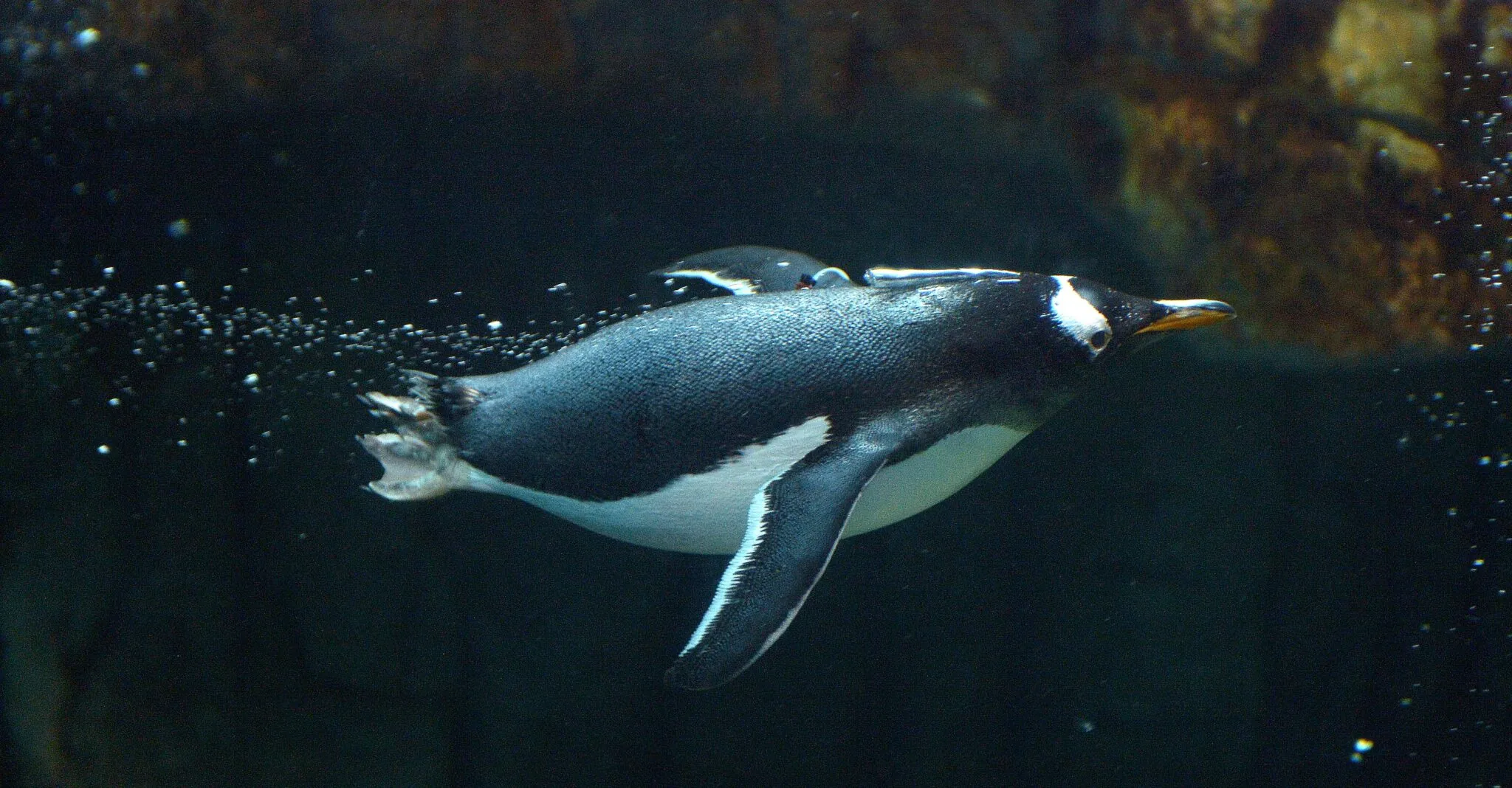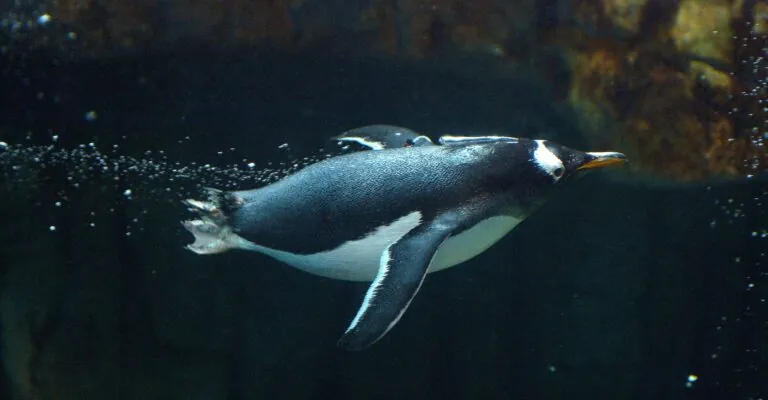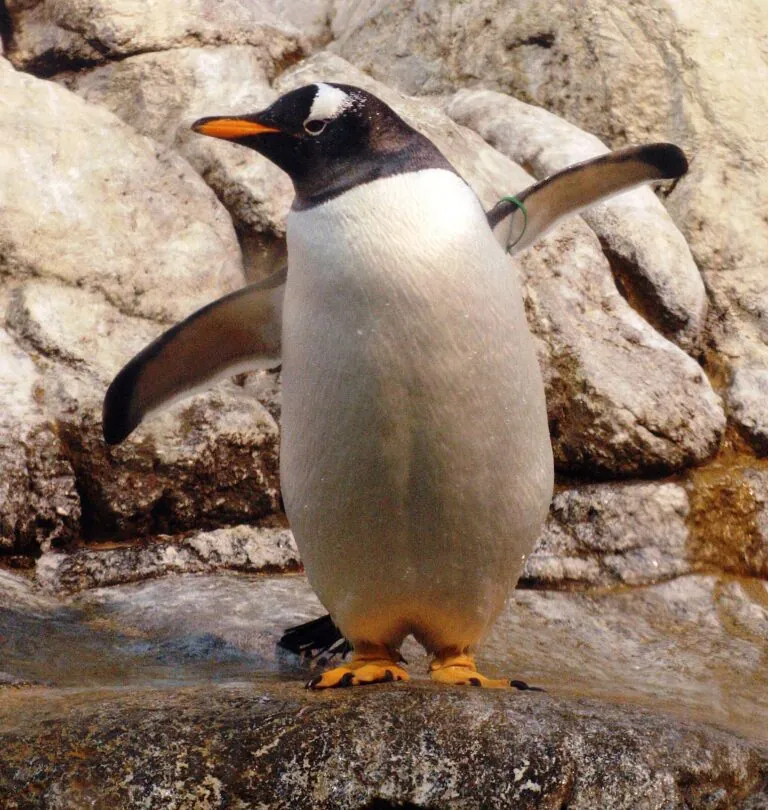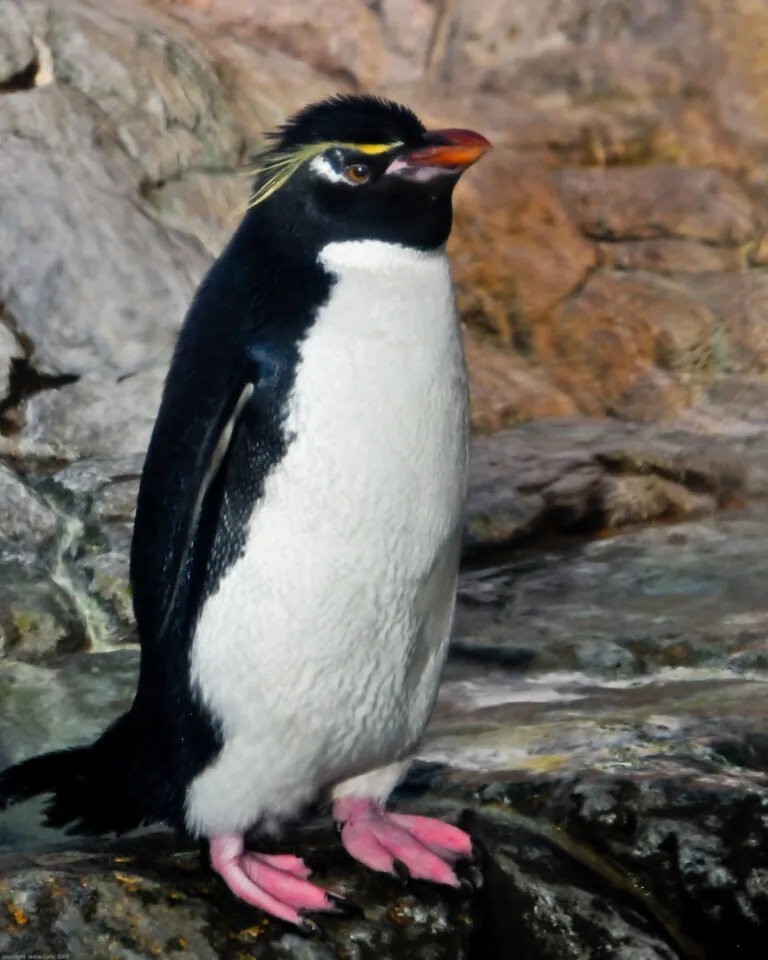-
Menu
- Plan Your Visit
- Meet The Animals
- Check Out Events
- Memberships
- New in 2025 - Giant Tortoise
- About The Zoo
- Support the Zoo
- Conservation
- Education
- Groups & Private Events
- Zoo News
- Contact
- Zoo Store
- Indianapolis Prize
- Global Center for Species Survival
- Schedule
- Donate
- Membership
- Tickets

- Plan Your Visit
- Meet The Animals
- Check Out Events
- Memberships
- New in 2025 - Giant Tortoise
- About The Zoo
- Support the Zoo
- Conservation
- Education
- Groups & Private Events
- Zoo News
- Contact
- Zoo Store
- Indianapolis Prize
- Global Center for Species Survival

Penguins
About
Penguins are flightless birds that rule the oceans with their swimming skills! They can dive several hundred feet while searching for food, and some travel more than 50 miles away from where they nest between breeding seasons. Many species of penguins gather each year colonies of several thousand breeding pairs to make nests on land, where both parents incubate one or two eggs and feed the young until they’re ready to fledge after a few months. Parents use vocal calls and gestures to communicate with each other and with their chick in these noisy nesting sites!
Penguins have many adaptations to thrive in the cold depths of the ocean. They have two layers of feathers to stay warm. Their outer feathers are coated in oil to make them waterproof. They also have camouflage called countershading: in the water, a penguin’s black back and white belly make it harder for predators to see them against the dark water and bright sky.

Conservation
Plastics in the ocean can cause harm to wildlife when they eat it or get trapped in larger pieces. Choose less plastic in the products you buy to help keep our aquatic habitats clean. You can also protect ocean wildlife by choosing sustainable seafood. The Seafood Watch program can teach you how!

Make memories watching one of our penguins create a unique piece of art just for you!
WHERE ARE THEY AT THE ZOO?


Gentoo penguin (Pygoscelis papua)
Third largest penguin, with long tail feathers and a white band on the top of their head.
IUCN Red List status: Least Concern

Southern rockhopper penguin (Eudyptes chrysocome)
Small penguins with yellow and black head feathers, red eyes and red beak
IUCN Red List status: Vulnerable due to climate change habitat effects, fishing, pollution
